You may find it strange to find a beginner’s guide to wines on the W&P’s financial page, but there is good reason for that.
First of all, life should not be all that serious all the time. Being in the know of how to invest your money is one thing, but being savvy with your pennies by acquiring the knowledge that will enable you to make good judgements is also another side of the financially-independent coin, and that sometimes means…for example…. knowing your wines. Think of this, through the years you may have formed a habit of settling for the most expensive wines, but the most expensive is not necessarily the best choice.
Secondly, knowledge is empowering and it enables you to make better informed choices. Gaining knowledge also opens the doors to financial stability and dignity of life. In other words, it can be linked to your self-esteem and confidence as well as your wallet.
So, if you already know you wines well, this article is not for you. But, if you ever felt somewhat awkward choosing a wine from a wine list, if you’ve had enough of waiting for your partner to decide on which wine to put in the trolly or if you bought an expensive wine and you could not explain why it lapped unagreeably on your tongue, then read on. There’s a huge variety of wines out there and being a sommelier is a real job. However, to be able to pick a wine and know what you should pair it with and when to pay more…that is something you can learn easily.
Out of the windows are those long, tedious and complicated wine courses. No more sipping and spitting and faking an interest on all the different types of grapes when wine tasting. Here’s some tips on how to choose your wine based on your occasion so you can simply enjoy!
The different types of wine
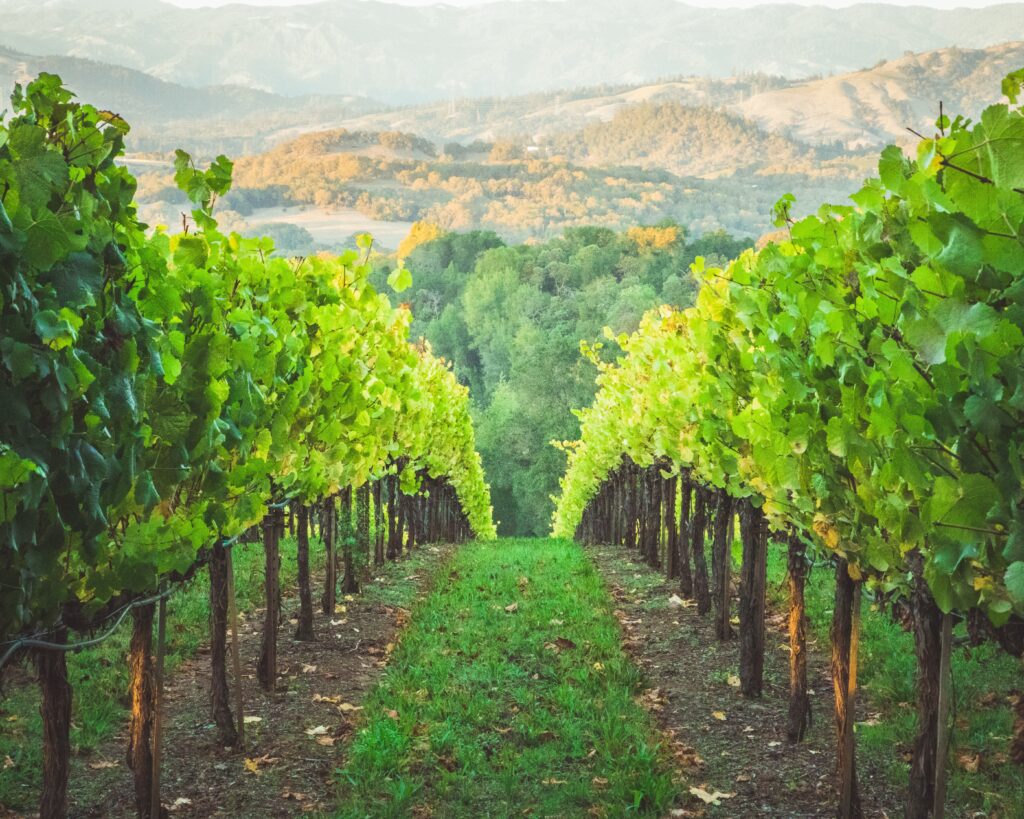
Wines come in red, white, rose plus dessert and sparkly.
We are not going to learn everything there is to know about all of the types of wine out there, but we are going to get to grips with the basic, get to know the most popular ones, what they are best paired with and…we’re going to make it fun, so it’ll be easier to remember too!
As a general rule:
- red wines are fuller and with more tannin – generally better with meaty dishes especially red meats
- white wines are fresher and more acidic – generally better with fish dishes but also with vegetables, poultry and even pork
- dessert wines have higher alcohol content and are usually sweeter – best enjoyed with desserts
- sparkly wines have bubbles – great for a celebration and a party!
Many countries produce wine. For a safe bet choose one from Italy, France, Spain, Australia, New Zealand, South Africa, Argentina, Chile, United States and Germany. Although other countries also produce wine, the above is a good enough list to start you off!
Although some names of wines come from very specific countries (for example, Sangiovese comes from Italy and Zinfandel comes from California), whereas other (Cabernet Sauvignon, Pinot Noir…) are made with grapes grown around the world. To make it simple – as a novice – stick with any of the countries listed above and with any of the names listed below.
In terms of cost, well….it depends where you are buying! If you buy your wine in the UK it will certainly cost you far-far more (approx. £5 – £10) than if you were in Spain (approx. £2 – £6). Different currencies, different alcohol taxation. Again, as a general rule, stick with any of the countries listed above and with any of the names listed below. Easy peasy!
The five key wine descriptors
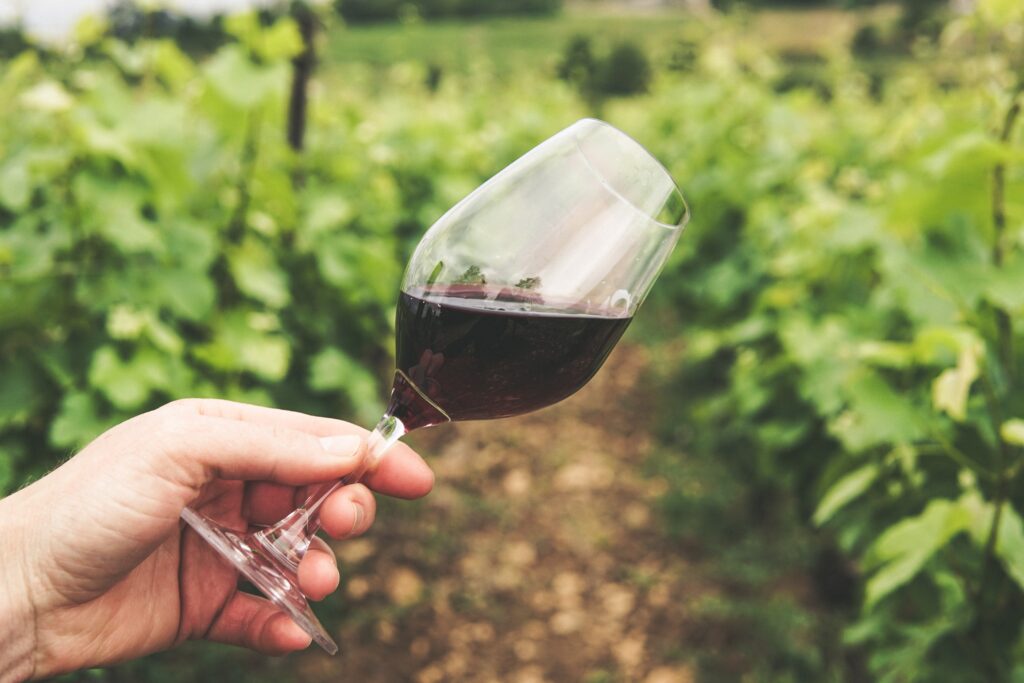
Body. You’ll often hear “full body”, “light body” or “medium body”. This is in relation to the perceived “weight” of the wine. A full-bodied wine feels thick and generally you will be able to notice some sort of coating along the sides of the glass as you swirl the wine. A light-bodied wine is almost like water. A medium-bodied wine is right in-between.
Tannin. Tannins are a naturally occurring substance in grapes that ends up in wine when the skin of the grape sits in the grape juice as it ferments. Wines that ferment with the skins for a longer period of time end up red = with high tannin content. Wines that have little or no skin contact end up pink or white = with far fewer tannins. Red grape skins have more tannins than white grape skins and this is also how the wine gets the colour. In general, the darker the wine, the higher the tannin and the stronger the taste. High tannin wines are sharp, bitter and rough or chewy. Lower tannin wines are smooth and soft.
Flavours. It can be fruity, spicy, smoky, flowery or earthy. You may not be able to identify a favour at first, but if you compare it with another wine you may notice the difference.
Sweetness. Is it sweet or dry?
Acidity. Describing acidity can become complex. Simply put: high acidity makes a wine taste refreshing and crisp (or sour if overdone), whereas low acidity makes the wine taste flat, soft and smooth.
How to serve wine
Decanter or not decanter?

Red wine, especially if on the more affordable spectrum, benefits a great deal from being aired for about an hour or more before serving. This is because the increased oxygen exposure to wine greatly improves the taste by softening astringent tannins and letting fruit and floral aromas come out. Blah, blah, blah…using a decanter is a great idea! Similarly, choosing larger glasses is also a good idea (not because you’ll drink more but because it allows the wine to breath more). However, if you have a particularly fragile or old wine (especially 15 or more years old) then decanting it for more than 30 minutes may spoil it.
You can decant white wines also, although decanting is recommended more for reds as they have more sediments (which you’d want to decant out). If decanting white, you can use a smaller decanter too (same reasoning, it just allows the wine to breathe a little less).
However, you must remember that oxygen does eventually become the enemy of wine as aromatics can float away, so: decant, drink…. but if not finished in a couple of days you may want to use it for cooking.
Chilled or not chilled?
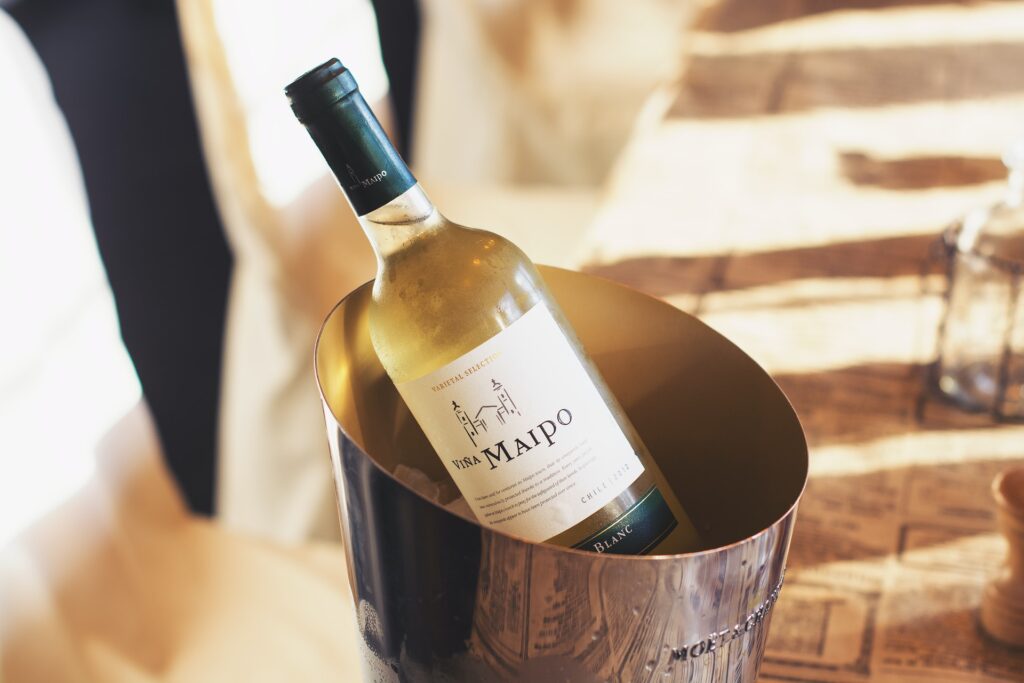
Chilled or not chilled depends on the taste.
Generally speaking, red wines are not served chilled and that is because the tannins tend to taste bitter as it cools. Said this, I have fond memories of my dad chilling his Sangiovese in a bucket of ice during the crippling Italian hot summer days.
White and rosé wines, with their low tannin content, taste better if chilled, although always best not too cold or you won’t taste many of the flavours.
Dessert wines are better at room temperature.
Sparkly wines always chilled!
Red Wines
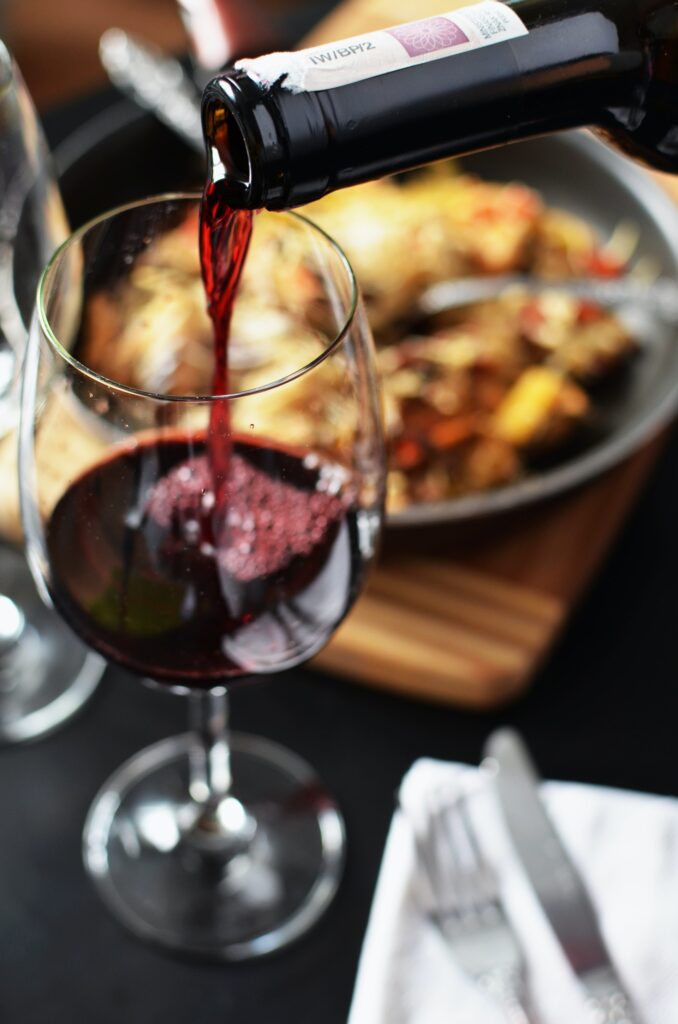
Cabernet Sauvignon
This is a full-bodied wine. If this wine was a woman, it would be one with lovely curves. It’s a bold and elegant wine that makes an entrance. It’s a serious wine that has no time for nonsense. It’s a dry one (no nonsense wink wink!)
Now, this wine is usually considered a safe bet when ordering off a menu and has often become the fall back by casual wine drinkers…because if it’s considered the all-start of grapes by the serious drinkers…. then it must be good.
However, Cabernet is generally more expensive and it doesn’t cost more because it’s inherently a good wine: it just costs more.
Best food to pair it with: Cabernet needs fat to latch onto and if you don’t have fat or salt in your meal…well…without going into the boring details…it’s dryness will simply coat your tongue and feel gross and crappy. Order this wine if you are eating steak or something fatty and salty! Otherwise, walk away.
Merlot
Stick with me here for imagery: the word “merlot” reminds me of another Italian word “merlo” which is a blackbird. Merlot = merlo = blackbird. Please lock this imagery for me…it will help I promise! Locked? Okay, where do birds hang around? On trees. And what do trees produce? Fruits. So, the Merlot is a fruity wine. It’s also a soft and smooth…in a way simpler if compared to the Cabernet, but don’t confuse that with lack of quality!
Merlot often has a bad name, but really it shouldn’t. Think of it as a misunderstood wine. Ok, it’s not as serious as a Cabernet, but it’s also smoother as it has less tannin and it’s less needy.
Best food to pair it with: Merlot is a versatile wine with low demands (not like the Cabernet, that demands being paired with fatty or salty foods). It actually goes well with vegetable-based dishes or tomato-based pastas.
Malbec
Ahhhhhhh the Malbec. The Malbec sits in between the curvy full bodies Cabernet and the fruity and soft Merlot. Mostly grown in Argentina, think of it as a mysterious gentleman that smokes cigars. Got that image locked? The Malbec is smoky and toasty wine (because oak barrels are normally used), with plump and dark flavours. Malbec wine also offers a great alternative to higher priced Cabernet Sauvignon!
Best food to pair it with: Malbec go well with BBQ, pulled pork and…. hear hear…with sweet and spicy foods which is not an easy combination!
Pinot Noir
Think of the Pinot as an elegant lady with fair skin and blond hair in an art nouveau dress. She walks into a room full of people with tall, slender and glamorous elegance. Got it? The Pinot Noir is silky, fruity, light and delicate. In fact, it has less tanning (tanning = tan = fair skin lady – wink wink!) which makes it very drinkable and respectable.
Best food to pair it with: this is the time to remind you that whatever you do…never ever-ever drink a red wine with fish. I want you to picture me and my Italian ancestors staring at you in shock for even thinking that’s ok! It is not! And there is actually a reason for that: the Omega3 and the fat in fish when combined with tannin in wine, creates a metallic and coppery flavour effectively spoiling your meal as you’ll be tasting metal and copper instead. The good thing about the Pinot Noir is that, as it has low tannins, it is a safe wine to drink with fish foods. In fact, this is a wine that loves barbecue-glazed salmon.
Syrah / Shiraz
First of all – I hear you ask – what’s the difference?
Simply put they are the same grapes, but Syrah is from France and Shiraz is from…
Little digression here. What animals live in Australia? Koalas and Kangaroos…okay okay…so…lots of “k” and “k” are weird letters…like the “z”. It’s not a perfect imagery but make do! Let’s go back where we left it and
…. Shiraz is from Australia.
There is a small difference in taste, but generally speaking they are also very similar. The Syrah from France is generally a bit more tart (acidic) and leaner in profile than the Shiraz, which also tends to be juicy and with a blackberry, plum or other dark fruits taste.
The important thing to remember here is that both the French and the Australian know how to party! The French have the aperitif time and the Aussie have plenty all parties! So, if is safe to remember it as a party wine! If you need to bring a wine to a party, either will be fab!
Best food to pair it with: think of these as two wines that go to parties, that know how to have fun and are not afraid of mingling. In fact, they pair well with spicier foods too. So, if you want to drink a red wine with your Indian or Tai food, Syrah or Shiraz are your mates!
Zinfandel
We talked about Sauvignon, Merlot, Pinot Noir, Syrah…lovely! Now…Zinfandel! Such a sharp and almost geometrical name! This wine is not from Europe. It is in fact American and although not really found in many other places outside the United States, it must be said it’s a very respectable wine. After all it comes from California and Cali is re-known for Hollywood, The OC, Silicon Valley and these people now a thing or two about wine. This full smoky body wine has a cherry and strawberry fruitiness, with some spicy hints which makes it easy to drink. It is also high in alcohol.
Best food to pair it with: this is a wine that likes it simple. Pizzas, cheese, lasagne and cheese…. did I say cheese? Cheese….out of the package or grilled. Cheese!
Sangiovese
Italy’s national red wine. This is not a fancy wine but it is a wine for the simple pleasures in life and the good times. Boom! Drop the mic get a glass!
It’s the most planted red variety in Italy and, as an Italian wine, it is also much more tart (acidic) and lighter in body. It’s a no-frills wine. It’s the wine for a stroll, for singing and eating good homely food.
Best food to pair it with: Sangiovese goes well with al Italian foods but it particularly loves gamey meats such as venison and duck because it brings out some sweetness. But it also goes well with tomatoes, vinaigrette and balsamic sauces and dressings. It’s wine that is not afraid of strong and acidic flavours.
White Wines

Chardonnay
When you think of white wines, start by locking the imagery of a Chardonnay and butter. This wine is fruity, buttery and velvety (because of the butter) which is atypical to dry white wines.
Best food to pair it with: it’s a wine that loves to go with raw and lightly cooked shellfish like crab and prawns as well as with steamed or grilled fish, whether as appetizers or as a main. It also goes well with vegetable terrines.
Pinot Grigio
The opposite of a buttery and velvety Chardonnay? The Pinot Grigio. This is an Italian wine and it is a good bet when thinking of ordering a white wine. Light-bodied, dry and crisp enters the ballroom with glamour like Italians can!
Best food to pair it with: the Pino Grigio goes well with seafood and vegetable antipasti as well as main dishes such as seafood salad, fritto misto, seafood, fish and chips and vegetable pasta. A light pasta sauce, weather creamy or with a little tomato, is also good!
Sauvignon Blanc
The Chardonnay is buttery, the Pinot Grigio is dry and crisp…now here comes the Sauvignon blanc! This, is a dry, tart, and acidic wine with herbal flavours as well as tropical fruit. Remember herbal and tropical then!
Best food to pair it with: it goes well with vegetables, delicate fish like sole, mild vinaigrettes and tangy dairy ingredients. It also goes well with cheese (especially goat cheese).
Riesling
Because this wine is not bound to a specific country, it means that it can have subtle differences. However, it is usually crisp, and (depending on where it is grown) on the low-alcohol side, with flavours of apple and citrus. Remember appley and citrusy then! A trademark of the Riesling is that it is somewhat a little sweet though still quite dry. Don’t be put off by its sweetness as the Riesling will offer enough palate-refreshing acidity to keep things balanced, so it’s still crisp rather than sugary.
Best food to pair it with: it’s a wine that pairs well with poultry, pork, fish and spicy Thai. Some Rieslings can also be drunk as dessert wines.
Rosé Wines

Cabernet Sauvignon Rosé
This a savoury wine. With cherry, black currant and pepper spice flavours, this wine is higher in acidity than the Cabernet Sauvignon red.
Best food to pair it with: as with most rosé wines it pairs well with salmon, chicken, duck and lamb (if served pink). It also goes well with niçoise salad, feta, spinach, mint and quinoa tartelettes, a variety of veggie skewers on the barbecue, charcuterie and soft cheeses.
Pinot Noir Rosé
This a delicate and fruity wine and it is delicate and classy like all the other Pinot (Pinot Noir in the red and Pinot Grigio in the whites).
This is a crisp and dry wine with soft, subtle aromas of crab-apple, watermelon, raspberries and strawberries.
Best food to pair it with: best enjoyed with serious seafood such as lobster, seared salmon, tuna or duck and delicately cooked rare lamb. It also goes well with goat cheese.
Zinfandel Rosé
This a sweet wine with flavours of strawberry, cotton candy, lemon, and green melon with moderately high acidity.
Best food to pair it with: best served chilled, it goes well with poultry, fish, vegetables, charcuteries, cheeses and Thai food.
Sangiovese Rosé
This is a fruity wine with notes of fresh strawberries, green melon, roses and yellow peach complemented by quenching acidity.
Best food to pair it with: best served chilled, it pairs well with poultry, fish, vegetables, charcuteries, cheeses and even couscous!
Dessert Wines

Dessert wine (or Fortified wine) gets its name because it tends to be sweeter and comes after a meal. Alcohol (usually brandy) is added to a dessert wine so that it can retain more of its natural sugars, which are typically used up during the fermentation process.
Dessert wines & Sparkling wines deserve a new chart of their own! As this article is meant mostly for your red, white and rose table wines, we shall quickly glide through this section.
Also, since normally there are fewer options on a menu for dessert and sparkly wines, you are likely to go with whatever they have.
Typical dessert wines are:
- Moscato. Sweet and fruity is a good Italian choice. Although it can also be enjoyed as an aperitif or with spicy foods, it does work well as a dessert wine. Salty snacks like cured meats, nuts, or blue cheese are also a nice counterbalance to Moscato’s sweetness.
- Madeira wines. This wine comes from Madeira, a Portuguese island in the middle of the Atlantic Ocean, and it’s available in a range of dry to sweet styles. Madeira wines are a great dessert wine which also pairs well with cheeses.
- Riesling wines. Some types of Riesling (see the Riesling session above) can be quite sweet. When sweet they can also be used as dessert wines.
- Port. Rich and sweet is best enjoyed with cheeses. In fact, it’s fabulous with cheeses!
Sparkling Wines

Sparkling wine is wine that has significant carbonation, which can occur as a natural part of the fermentation process or via carbon dioxide injection after fermentation.
Due to their bubbliness they are often regarded as the perfect choice for a celebration be it as an aperitif or …sometimes…even with your main!
Sparkling wines can be dry as well as sweet and right here is a chart from driest to sweetest: Brut Nature, Extra Brut, Brut, Extra Dry/Extra Sec/Extra Seco, Dry/Sec/Seco, Demi-Sec/Semi-seco and Doux/Sweet/Dulce.
The main thing to remember here is not to be panicked: it’s a party!
Often people refer to Champagne as the best sparkly wine (also by far the most expensive!). Well, it’s not exactly so.
Sparkling wine is made from a wide range of red and white grapes. However, for a sparkly wine to be labelled “Champagne” it must be produced in the Champagne region of France. Champagne clearly made a name for itself, but there are other sparkly wines out there that are just as good if not better, from other areas. Two valuable competitors are, Prosecco and Cava.
The advice here is not to be blinded by the label but to go with the flavour that you best like.
- Champagne. French and exclusively from the Champagne region, can range in colour from white to yellow and pink as well as it can range in flavours from fruity to spicy and floral. (A bottle can cost anything from £25 to £300 and upwards. Some vintage bottles can literally cost you thousands!)
- Prosecco. A magnificent Italian sparkling wine and shoulder to shoulder with Champagne. Most Prosecco wines are produced in a dry, brut style. However, fruity flavours of green apple, honeydew melon, pear, and honeysuckle make it sweater than it is. (A bottle can cost anything from £7 to £50. Obviously, you will not find it for £7 in a restaurant or bar!)
- Cava. A sparkling Spanish wine, perhaps considered as less sophisticated than Champagne or Prosecco. Light to medium bodied and typically dry, it has zesty citrus flavours. When aged longer it can develop a beautiful baked apple note and a pronounced nuttiness. (A bottle can cost anything from £4 to £30. Again, it will be more in a restaurant or bar!)
Conclusion
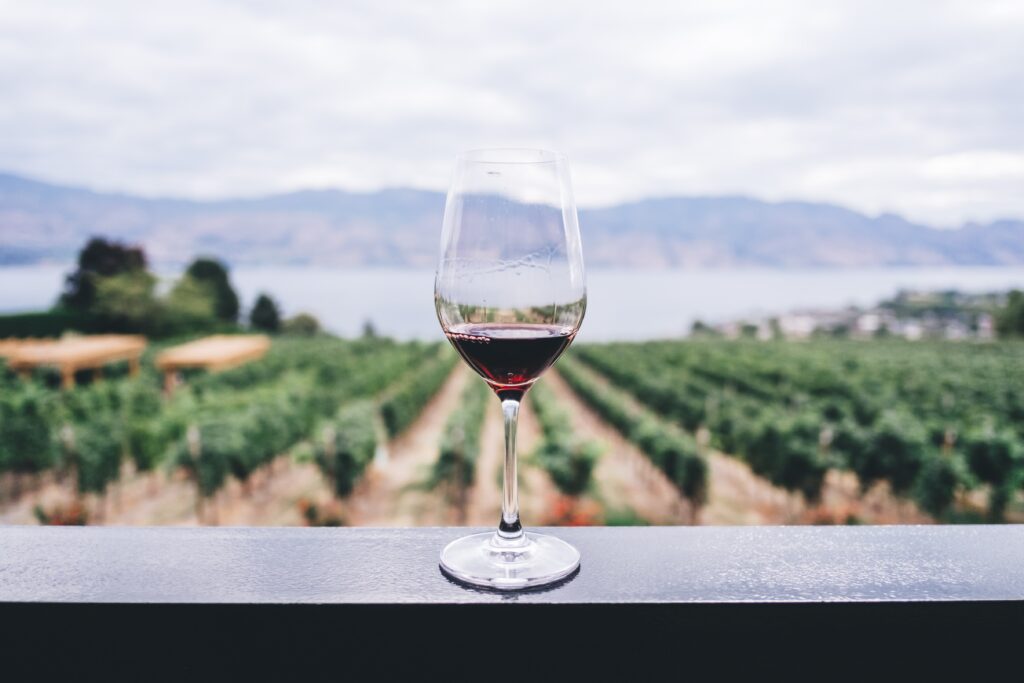
Wine is to be enjoyed responsibly. Whether red, white or rosé or whether as dessert or sparkling to celebrate something, it should not intimidate you! And hopefully, this has helped you learn about which is best for the occasion and where to save your pennies!
As a last tip on this subject, you may want to download the Vivino app to your mobile phone through which you can easily get ratings, read reviews, and check prices instantly just by snapping a photo of any bottle or menu.
Hope you enjoyed and cheers!



